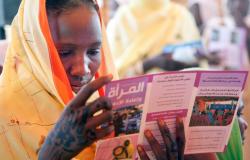How a ‘Public Authority’ lens can help us understand NGOs and INGOs

This post by GP's Online Editor is part of a series exploring ‘public authority’ based on research at LSE’s Centre for Public Authority and International Development at the Firoz Lalji Centre for Africa. It was first published on the Africa at LSE blog.
A ‘public authorities’ lens seeks to understand the full range of actors claiming power and governing people in the world’s most conflict-affected places (CAPs). It does this by exploring these actors’ appeals to popular social norms, the provision of public goods and, sometimes, acts of coercion and violence. It includes actors considered part of the state and those seemingly far removed from or even standing in opposition to it, such as street level bureaucrats, customary leaders, civil society organisations, religious leaders, business associations and armed groups.
A public authority lens can also be useful to those researching INGOs and NGOs. These aid and development actors regularly claim to be working on ‘governance’, ‘good governance’ or the ‘governance of’ some population, public good or area of social life. Furthermore, even the most quotidian of programmes justify their actions through appeals to popular or technocratic notions of progress or development. For these reasons, INGOs and NGOs often work through and themselves constitute forms of public authority.
Here – based on forthcoming empirical research – are some of the questions a researcher using a public authorities lens may ask of them:
Playing the politics of service provision
As in much of the world, the provision of, and access to, vital public goods such as security, justice, education and health services are important currencies for potential leaders.
INGOs and NGOs are often intimately involved in the delivery of these services in CAPs, either as providers themselves or by aiming to reform the way public goods get to people. In most cases this requires them to engage or partner with other types of public authorities, from local civil society groups to business associations, companies, the state and armed groups. It often entails that funding and resources be accompanied by capacity-building efforts to ensure services are governed ‘correctly’.
Their choice of partners are intensely political decisions. INGOs can often make or break those they work with, and their engagement signals to others that the chosen partner – and by extension their visible and hidden networks – is considered legitimate by the international community. For their part, NGOs are often already locally connected, or their members have long and well-known histories as political actors. Their involvement in the provision of public goods can bolster these networks and identities.
What both actors do and who they do it with should, therefore, be of concern to anyone trying to understand public authority in conflict-affected places. Research must also explore any differences between who NGOs and INGOs publicly say they engage and who they actually work with to get things done.
Insiders, outsiders, and social norms
A public authority lens also asks us to examine actors’ appeals to social norms when providing goods and claiming authority. These appeals are necessary as – to distinguish it from pure oppression – public authority requires a measure of voluntary compliance or legitimacy. Accordingly, actors’ appeals often take the form of justifications for their preferred distribution of resources or access to goods. They implicitly create insiders and outsiders, and boundaries or rules that determine who or what are deemed worthy of support, protection or development.
INGOs and NGOs are no exception. They routinely seek to explain or justify their difficult decisions over who gets what. The resulting appeals can be lofty when they involve principles found in international humanitarian law, human rights, religious doctrines or particular notions of morality, justice or progress. But they also often involve considerations of risk, their own capacities, future funding and the power and politics of the CAPs they wish to continue operating in. Both shape what these actors do and how they aim to govern others.
Normative appeals are identifiable in INGOs and NGOs’ branding, their public reports, announcements and online presences, as well as in programme documents, evaluations and learning exercises. How they are made, and how they are received, are important areas of research. They reveal how these actors wish to be perceived, the insiders and outsiders they recognise and the identities and histories they wish to promote. They can also shed light on the ambiguities, compromises and contradictions INGOs and NGOs struggle with as they navigate the complexity of CAPs.
The blurring of boundaries
Authors investigating public authority in CAPs often refer to the idea of ‘twilight institutions’, which suggests that some institutions do not easily fit into conventional distinctions between public/private, state/society and formal/informal. Blurring occurs when actors engage in more or less ‘state-like’ rhetoric and practices, such as providing public goods, collecting taxes, enforcing rules or wearing unforms, but do not adhere to other principles commonly associated with the state such as honouring a social contract, non-discriminatory service provision or impersonal governance.
INGOs and NGOs can also blur boundaries. For example, INGOs are often guided by mandates and principles crafted in international offices, and by agreements struck with the governments of the CAPs they work in. In practice, however, they variously align with or reject the actual state, creatively interpret local legislation and customs and present themselves as more or less bound by international norms, mandates and negotiated agreements as the situation changes.
NGOs often have less agency than their international counterparts. Nonetheless, many claim to represent particular communities or marginalised identities, and to be able to provide access to them. Yet, to survive in CAPs they must also often be intimately connected to the state, the international community and other forms of public authority. And their activities must emphasise or downplay their embeddedness in, and links to, either as the security situation and political economy of aid and development demands.
Such actions can cause INGOs and NGOs to take on a chameleon-like qualities as they present different faces to different audiences, and tensions and contradictions arise.
Why does this all matter?
Viewing INGOs and NGOs through a public authority lens is not really about assessing or evaluating their performance. Rather, it provides researchers with questions that explore how the kinds of development they are promoting in CAPs accord with their practices, how they are being received on the ground and how they may be affecting local power and politics. This is important as both actors involve themselves in governing ever more areas of daily life, with many looking to close the gap between purely humanitarian programming and development and state-building; sometimes referred to as the ‘nexus’.
But it is also about not putting either on a pedestal. INGOs and NGOs face the uncertainty and opportunities of fast-changing CAPs. This includes the energy and innovations of local leaders, organisations and states, and the competing, complementary and emerging social norms and laws they promote. Yet, part of the rationale for their presence is that authorities in CAPs are unable or unwilling to promote universal norms, equally provide public goods or enforce rules, and that they need help to fill these gaps. INGOs and NGOs can arguably only do this by themselves claiming public authority. How they choose to do so, and who they do it with, has real consequences for millions of people in some of the most dangerous, chaotic places on the planet. These are truly subjects worthy of our research.
The views in this post do not reflect those of Global Policy or the LSE.
Image: DDR Outreach activity in El Srief, with the support of the local NGO Friends of Peace and Development Organization, UNDP, UNICEF and North Sudan DDR Commission. Credit: Albert Gonzalez Farran – UNAMID. Licensed under creative commons CC BY-NC-ND 2.0.


